Planning to ride a motorbike through Vietnam? It’s an amazing experience! The key to a memorable experience lies in selecting the appropriate season for your ride.
Each season in Vietnam offers its own unique charm and challenges. While spring, autumn, and winter present more temperate and varied riding conditions, summer introduces a more intense and challenging environment due to its heat and humidity.
Let’s roll into the details of each season, so you can pick the perfect time for your own unforgettable ride across this beautiful country.
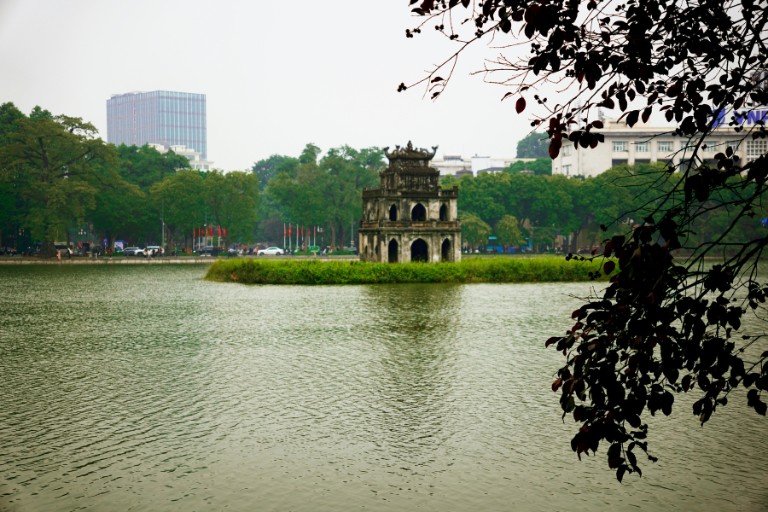
Key takeaways:
| Timeframe | Rating | Details |
| Spring (February to April) | Best |
|
| Autumn (September to November) | Best |
|
| Winter (December to February) | Moderate |
|
| Summer (May to August) | Worst |
|
Contents
1. Spring (February to April): Blossoming Rides
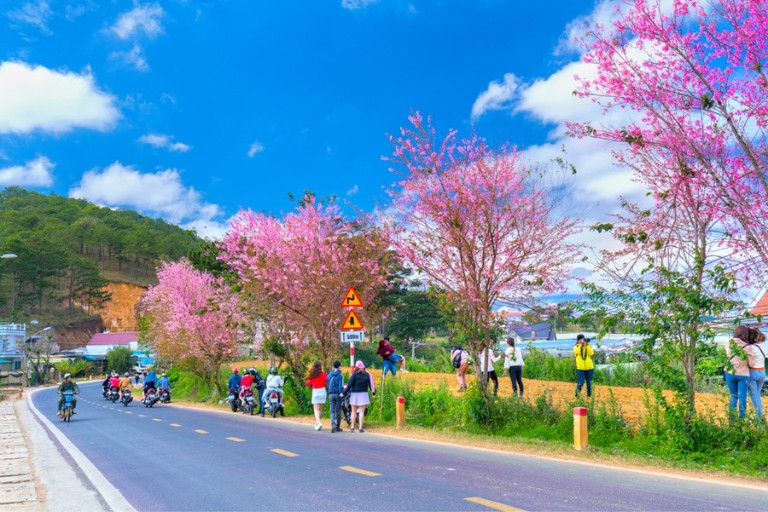
Spring in Vietnam is nature showing off. Riding through the North during this season can be a treat with the cool 15-20°C (59-68°F) temperatures, wearing a light jacket is just enough for your trip.
It’s like the whole place wakes up – peach and apricot blossoms pop open, and the air feels so fresh.
In Central Vietnam, the highlands are a shade of vibrant green you have to see to believe. Down South, it’s a bit warmer, but the breeze! It’s like nature’s own AC, keeping you cool as you pedal.

Springtime in Vietnam is like a natural energy booster. It’s pleasantly cool yet warm enough to keep you from feeling chilly.
Riding long distances during this time is a refreshing experience. In the North, the air quality is notably fresh, which can ease any feelings of stuffiness or breathing problems.
The milder temperatures also contribute to reduced sweating, enhancing comfort during motorbike journeys.
2. Autumn (September to November): Golden Paths
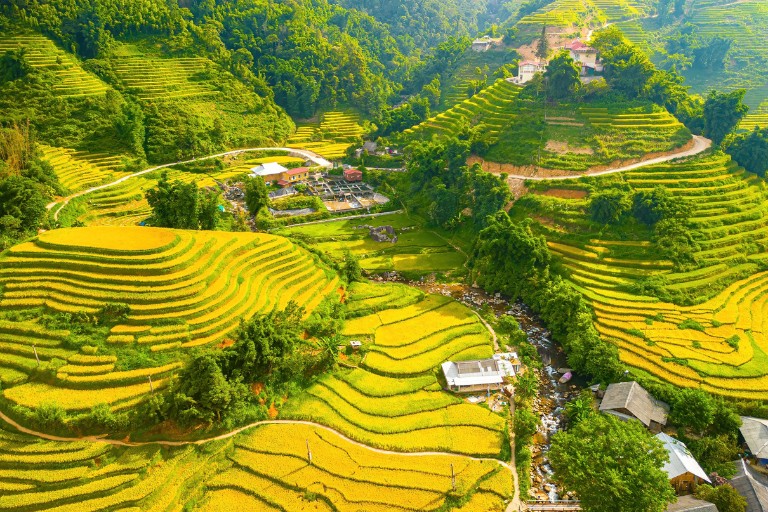
Autumn is when Vietnam turns into a live painting. In the North, the golden rice terraces of Sapa and Ninh Binh are a breathtaking sight, with their shades of gold and green soaking under the gentle autumn sun.
The Central region is your postcard-perfect spot with clear, blue skies and mild weather. And the South, still warm but less rainy, offers clearer roads and lovely sunsets.
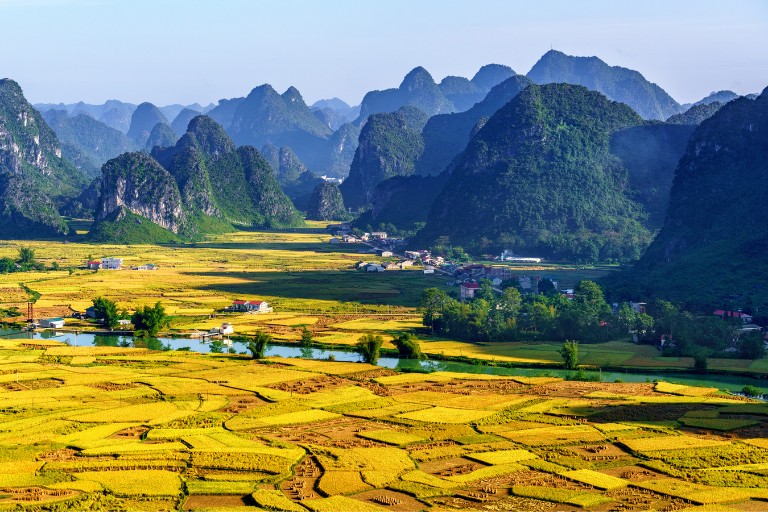
Autumn’s mild temperatures (around 20°C or 68°F) are super kind to your body. You’re less likely to face dehydration or heat exhaustion compared to summer.
Riding during autumn is generally a pleasant experience as the cooler weather helps to avoid rapid fatigue.
Additionally, the lower humidity during this season helps you keep your energy steady. This makes it easier to go on longer trips.
3. Winter (December to February): Chilly Adventures

Though it might not be the preferred season for local riders, there’s good news for my fellow Westerners – Vietnam’s winter will likely feel quite mild and pleasant to you!
Winter in the North is great for cooler rides, with temperatures around 10-15°C (50-59°F). This climate is particularly favorable for longer rides, free from the tropical heat.
The misty landscapes in places like Hanoi are like riding through a dream. Central Vietnam is milder and less crowded – a hidden gem for peaceful explorers.
The South stays lively and warm, offering a great escape from the cold if that’s more your style.

However, to be sure, you still need to gear up to stay warm, especially your hands and feet. Many roads along the north and central coast can be windy and colder.
Getting ready for winter rides can be exciting when you have the right gear. The chilly air can make you feel awake and full of energy, giving a special feeling to your ride.
But if you like it warm, going down South is a great option. The weather there is usually nice and comfy for riding.

4. Summer (May to August): The Challenging Heat
Summer motorbiking in Vietnam is, well, an adventure. Be prepared for heat – lots of it. In the North and the South, temperatures can climb above 35°C (95°F).
During this season, it’s crucial to stay hydrated and take regular breaks to avoid overheating. The high humidity can also slow down the body’s cooling process, increasing the risk of heat exhaustion.
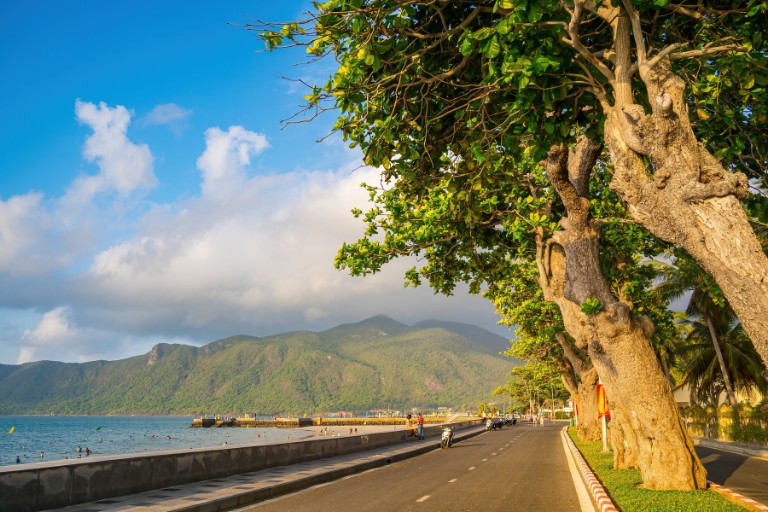
The humidity wraps around you like a warm blanket, which can be pretty intense. Plus, those sudden rain storms turn roads into slippery slides. If you’re up for the challenge, pack lots of water and get ready for a steamy ride.
If you’re riding in summer, start early in the day and always listen to your body.
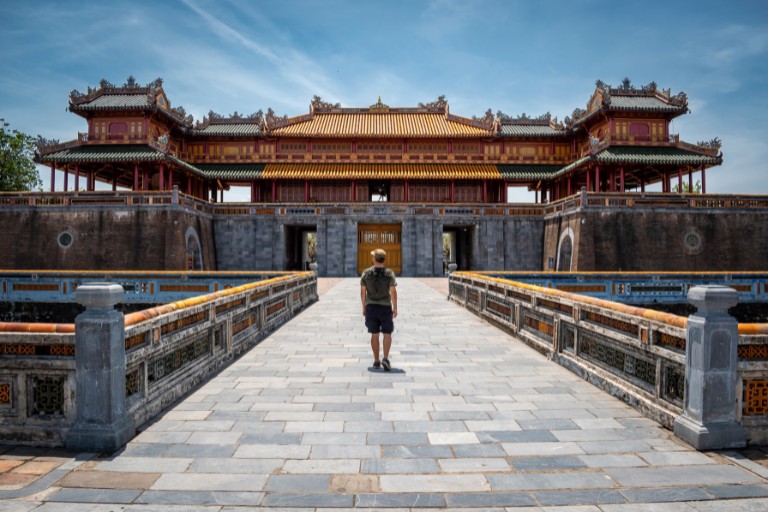
Additional Considerations
When planning your riding trip through Vietnam, it’s crucial to consider not just the seasons, but also the monthly climate variations, daylight hours, and regional weather differences.
These factors play a significant role in shaping your overall experience.
1. Daylight Hours
- For the best motorbiking experience in Vietnam, you should ride during daylight hours. This not only ensures safer travel but also allows you to fully enjoy the country’s stunning landscapes in natural light.
- Spring and Autumn: These seasons offer a balanced duration of daylight. Sunrise typically occurs around 6:00 AM, and sunset nears around 6:00-6:30 PM. This balance provides ample daylight for riding without the extremes of summer heat or winter chill.
- Summer: Offers the longest daylight hours, great for early starts. Sunrise around 5:00 AM and sunset close to 7:00 PM.
- Winter: Features shorter daylight, with sunrise around 6:30 AM and sunset by 5:30 PM. Efficient planning is key to maximize daylight hours for riding.
Adjusting your ride times accordingly ensures safer journeys and helps you make the most of Vietnam’s breathtaking landscapes throughout the day.
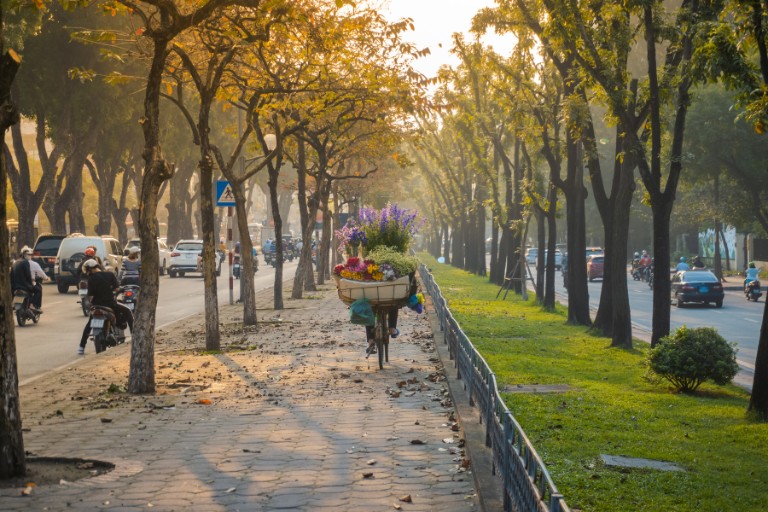
2. Local Holidays and Events
- Be aware of Tet (Vietnamese New Year) usually in late January or early February (depending on the lunar calendar). The country slows down significantly during this period, which can affect travel plans.
- Other festivals and local holidays like the Mid-Autumn Festival in late September (or early October) or Reunification Day in April can also influence local traffic and availability of services.
Planning ahead and staying informed about these local occurrences will help you navigate smoothly and enrich your experience with unique cultural insights.
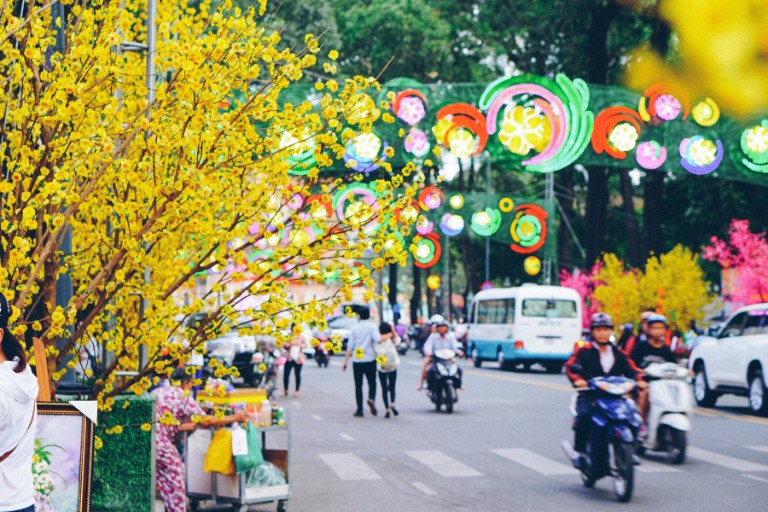
3. Regional Weather Variations
- North Vietnam: Expect chilly winters around Hanoi, with temperatures near 10°C (50°F) and foggy conditions. Summers are hot, exceeding 30°C (86°F), with rapid weather shifts.
- Central Vietnam: Cities like Hue and Da Nang experience a tropical monsoon climate. January to August is dry and suitable for riding, but September to December brings rain and occasional typhoons.
- South Vietnam: In areas like Ho Chi Minh City and the Mekong Delta, it’s warm all year, ranging from 25°C (77°F) to 35°C (95°F). The dry season lasts from November to April, and the wet season from May to October is marked by brief, intense afternoon rains.
By considering these region-specific tips, you’ll be well-prepared for the diverse and changing weather during your riding adventure in Vietnam.
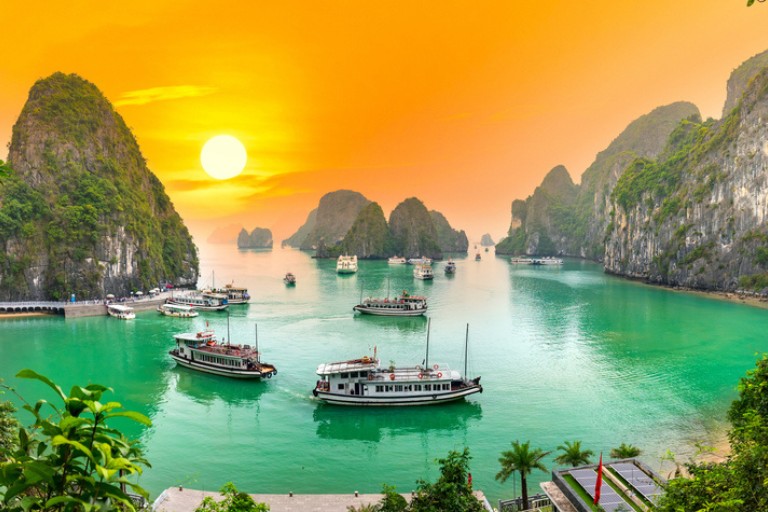
Wrap it up
So, there you have it – a quick guide to choosing the best times for your Vietnam riding trip. Remember, it’s not just about the views; it’s also about how comfortable you feel while pedaling through those changing landscapes.
Choose wisely for an amazing and comfortable ride across Vietnam’s stunning scenery!
